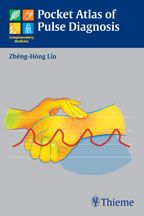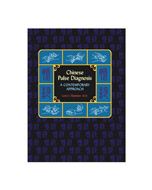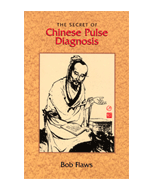We use cookies to make your experience better. To comply with the new e-Privacy directive, we need to ask for your consent to set the cookies. Learn more.
Pocket Atlas of Pulse Diagnosis
For students and practitioners of Chinese medicine, one of the more difficult diagnostic methods to learn and master is pulse diagnosis. Successful transmission of this knowledge and skill requires the description of what is felt through palpation -- something that often evades the comprehension of most beginning students, if these descriptions are not portrayed effectively.
The Pocket Atlas of Pulse Diagnosis unravels the mystery of pulse diagnosis. Detailed explanations of the 28 individual pulses are presented, along with simple diagrams that vividly illustrate how the different pulses should "feel" like under the fingers at each level of palpation. Useful comparisons of the different pulses are also included to aid the reader in understanding how to differentiate between the many types of pulses. There is a chapter that analyzes the pulse manifestations of various common diseases, as well as a chapter that explores sections of Wáng Shu-Hé's The Pulse Canon (Mài Jing).
One cannot find a more rich presentation of pulse diagnosis in a pocketsized atlas. All in all, this is a valuable and convenient learning tool for anyone seeking to be proficient in the art of pulse diagnosis.
| Summary | For students and practitioners of Chinese medicine, one of the more difficult diagnostic methods to learn and master is pulse diagnosis. Successful transmission of this knowledge and skill requires the description of what is felt through palpation -- something that often evades the comprehension of most beginning students, if these descriptions are not portrayed effectively. The Pocket Atlas of Pulse Diagnosis unravels the mystery of pulse diagnosis. Detailed explanations of the 28 individual pulses are presented, along with simple diagrams that vividly illustrate how the different pulses should "feel" like under the fingers at each level of palpation. Useful comparisons of the different pulses are also included to aid the reader in understanding how to differentiate between the many types of pulses. There is a chapter that analyzes the pulse manifestations of various common diseases, as well as a chapter that explores sections of Wáng Shu-Hé's The Pulse Canon (Mài Jing). One cannot find a more rich presentation of pulse diagnosis in a pocketsized atlas. All in all, this is a valuable and convenient learning tool for anyone seeking to be proficient in the art of pulse diagnosis. |
|---|---|
| Author | Zheng Hong Lin |
| Publication Date | 1 Jan 1970 |
| Publisher | Thieme |
| Number of Pages | 180 |
| Book Format | Softback |
* Orders shipped outside of Europe are eligible for VAT relief and will not be charged VAT.





